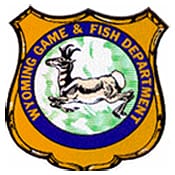Wyoming Game and Fish Reiterates Opposition to Ferret Petition
Looks like another case of Animal Preservationists thinking they know better than professional fish and game managers. – AmmoLand
![march2010_ferret[1] Wyoming Black-Footed Ferrets](https://www.ammoland.com/wp-content/uploads/2010/03/march2010_ferret1.jpg)

CHEYENNE, WY –-(AmmoLand.com)- Adamant opposition to a petition filed by three environmental groups requesting the status of three reintroduced populations of black-footed ferrets be changed from the current “nonessential and experimental” to “endangered” has been reiterated by the Wyoming Game and Fish Department.
The most recent opposition was outlined in a Dec. 1 letter to the U.S. Fish and Wildlife Service asking Regional Director Steve Guertin to dismiss the petition.
In the letter, Game and Fish Deputy Director John Emmerich wrote: “We believe that changing the status of these reintroduced populations of ferrets from ‘nonessential and experimental’ to ‘endangered’ would be extremely detrimental to the recovery of the black-footed ferret and the precedent would be extremely detrimental to the recovery of many other species.”
After black-footed ferrets were first reintroduced to Wyoming’s Shirley Basin between Laramie and Casper in 1991 under the “nonessential and experimental” status the population has grown to at least 500 animals in the core area. After the initial releases off the south flank of the Shirley Mountains, the population has expanded nearly as far south as I-80 to almost Wyoming Highway 220 between Casper and Muddy Gap under the designation contained in Section 10(j) of the Endangered Species Act.
“Without the ‘nonessential and experimental’ designation reintroductions would not have been possible in Wyoming,” Emmerich wrote. “The conservation success of the ferret under Section 10(j) is irrefutable. To change the status of the ferret and lose the 10(j) assurances promised to participating landowners would erode trust among collaborators and create a sense of betrayal that would jeopardize on-going and future successes of the recovery program for the ferret as well as other species.”
The petition to change the current experimental, nonessential designation, that allows continuation of ranching practices and other land uses, was filed by WildEarth Guardians, Biodiversity Conservation Alliance and Center for Native Ecosystems on Sept. 7. On Sept. 9 the Game and Fish issued a statement refuting the petitioners claims and urging the Service to dismiss the petition as “frivolous and unjustified.”
The Game and Fish believes the petitioners have downplayed the impacts to private landowners because the change in status is only proposed for “public lands.” Emmerich wrote, Many public lands in Wyoming are intermingled with private lands, therefore, landowners are saddled with the legitimate concern that if they allow reintroductions of the ferret on or near lands they own or lease, their way of life could be impacted by the ESA if the assurances available to them under Section 10(j) are lost.
“Landowner support and cooperation has been, and continues to be, the only way a successful reintroduction program can be achieved in Shirley Basin,” Emmerich also wrote.
The environmental groups also want the “nonessential and experimental” status revoked for reintroductions in Arizona’s Aubrey Valley and South Dakota’s Conata Basin. The petition contends having no restrictions on prairie dog control is an impediment to black-footed ferret expanding their range and makes them susceptible to inbreeding and disease. But, there have been no prairie dog control efforts in Wyoming’s recovery area for over 50 years, reports Bob Oakleaf, nongame coordinator for the Game and Fish.
“The Shirley Basin population has expanded its range more than 10-fold under its experimental status,” Oakleaf said. “This petition is completely contrary to the best interest of the species we’re trying to recover.”
He adds the petition throws into jeopardy the department’s proposed expansion of reintroduction and potential delisting of the species within the white-tailed prairie dog range within five years.
His staff has been able to document approximately 3 million acres of white-tailed prairie dog habitat or potential black-footed ferret habitat in Wyoming.
